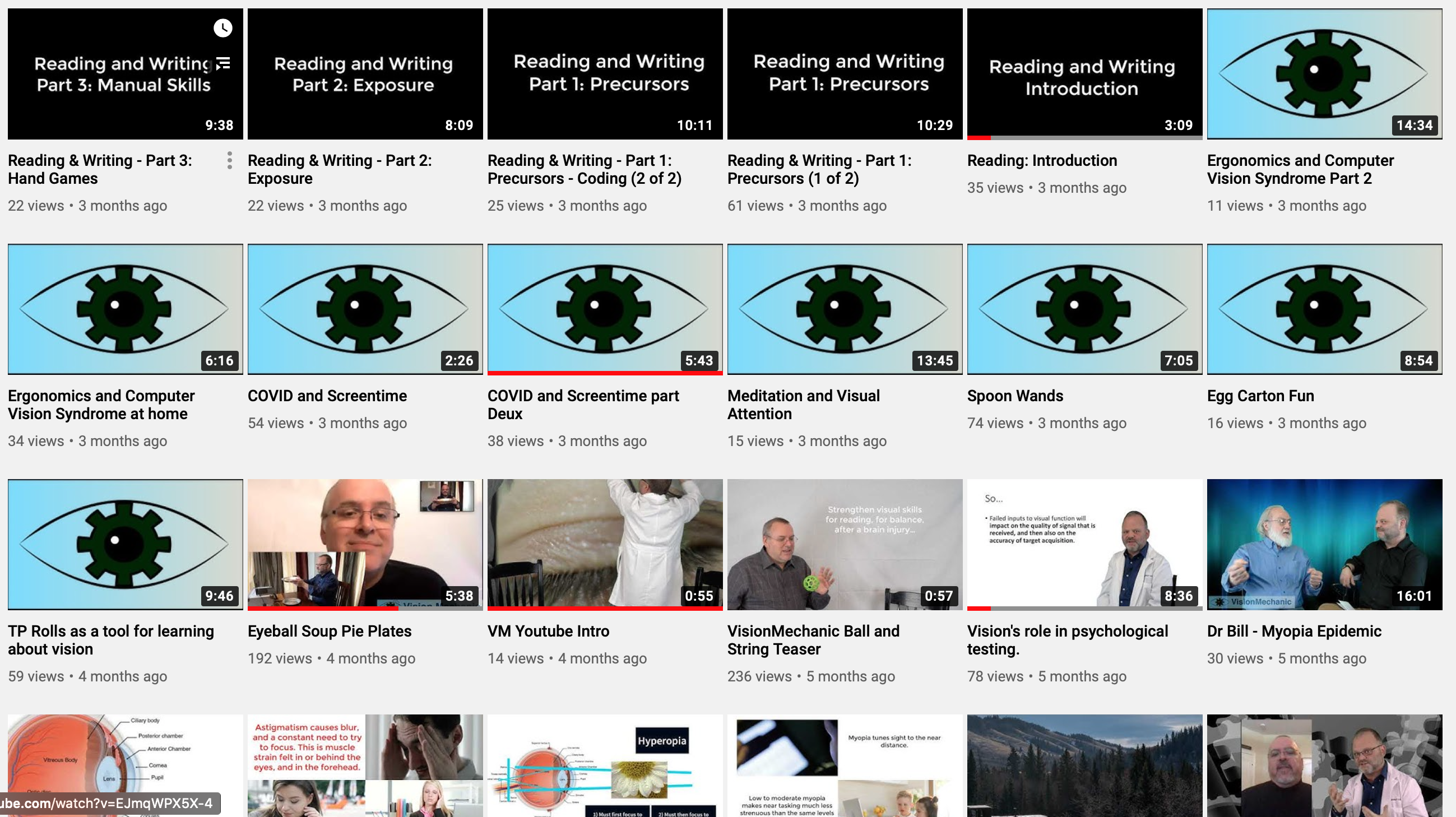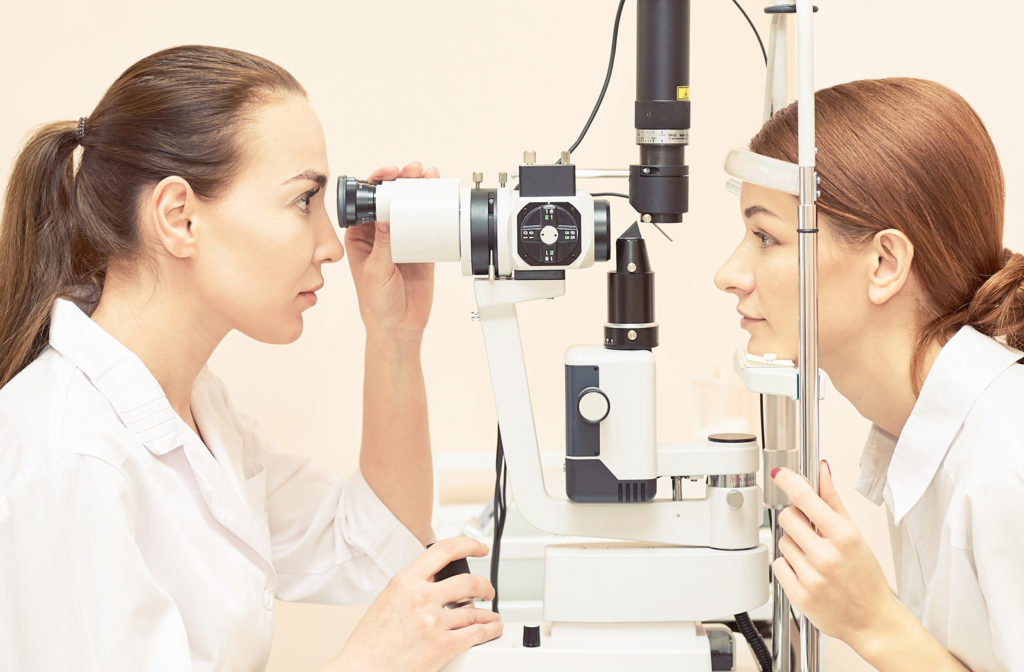 Subscribe to Vision Mechanic on YouTube.com
Subscribe to Vision Mechanic on YouTube.com
(The goal of VisionMechanic.net is to provide science-based clinically relevant resources about humans, for humans. All humans. This series highlighting International Vision and Learning Month (August) is more focused on those humans who are in formal learning programs, most notably, younger humans. If you yourself are a learner, or if you teach them, guide them, care for them or provide therapy for them, then this series will be of interest to you.)
Of course, I’ll explain the title: If all that’s being done to test eyes is to use an eye chart only, then it’s a waste of time. Mostly, that’s what people call an eye test: Check eyesight. This notion is way off the mark, and a good example of the Dunning-Kruger Effect in action: What we do know, which is often very little, makes us believe we know a lot more than we do and this leads us to some pretty awful conclusion at times. As a rule, those who are expert in their fields will be the first to say they need to learn more. In this case, taking a child’s vision seriously means we can treat many common conditions and avoid unnecessary testing and treatment.
…taking a child’s vision seriously means we can treat many common conditions and avoid unnecessary testing and treatment.
This brief post covers the basics of what should be in an eye health and vision exam – that is, if we are at all interested in understanding what is going on. Some of it gets a little technical, but that’s ok, it’s best to give more than less.
Again, eye tests in this sense are not only of no use – a real waste of time – they are actually discriminatory.
Elements of a Comprehensive Vision Exam
The following is a listing of visual functional elements that can and should be considered as part of a comprehensive assessment of function. That is, this is what should happen during an eye exam you pay for for yourself, or one that you offer your children.
All the following can be done in most modern clinics but may not be available in general optical or chain clinics:
- Health and History
- General personal and family health and eye health history.
- Assessment of work and lifestyle needs, including any current concerns.
- Visual acuity (how clearly you can see with and without glasses, right eye, left eye, both eyes together).
- Depth perception / stereopsis.
- Color perception.
- Intraocular pressures (fluid pressure inside the eyeball itself, this is unrelated to blood pressure).
- External exam: Lids, lashes, conjunctiva, tear ducts, cornea, facial structure and alignment, facial muscular function, general neurological function and development path (at least history).
- Internal examination (ophthalmoscopy, others such as Optical Coherence Tomography (OCT), photography)
- Neurological screening with visual field (screening is sufficient)
- Physical Elements of Vision – ‘Hardware’
- Alignment (aka posture):
- Resting posture and alignment. (Do the eyes turn away from straight-on fixation (the ortho position)?)
- Lateral and vertical alignment range and facility. (Vergence)
- Focus (accommodation) range (depth of available focus range) and facility (how easily can the eyes shift focus).
- Refraction / Refractive State: Looking for myopia (nearsightedness), hyperopia (farsightedness), astigmatism, and anisometropia (marked difference in prescription between right and left eyes).
- Is prism indicated to help align images with the eyes?
- Is there a need for a ‘near boost’ or other specialized optical intervention?
- Visuomotor skills:
- Saccades: Rapid deliberate targeting.
- Pursuits: Following a smoothly moving target across the midline.
- Fixation: Maintenance of gaze on an unmoving target.
- Vergence: Movement of the eyes inwardly or outwardly to target near and distant targets, respectively.
- Accommodation: Is the accommodative system responsive and with good range, or is focus range and facility more restrictive (or absent)?
- Range of comitant movement: Are there any restrictions or misalignment as the eyes try to hold a target in a full range of movement?
- Vestibular testing is indicated if visuomotor skills are deficient.
- Alignment (aka posture):
There’s also a whole realm of visual perceptual testing and visuo-motor skills testing that could be put into action to look at even more detail, but this is beyond the scope of a basic comprehensive eye health and vision exam.
If your provider does not know what these tests are, you’re likely in the wrong place.
If any of these elements above is deficient, it will show up in predictable way and should be easy to detect in clinic. In most provinces and states, these vision assessment services are covered for parents and should be used, with exams at least every two years. If your provider does not know what these tests are, you’re likely in the wrong place. Likewise, if the doctor prescribing medication to your child for classroom and learning concerns is unfamiliar with the child’s visual profile, get another opinion before filling that prescription.
Aside: Eyesight is most often tested at a distance of around 10 feet, if you go by school settings and family practices. If your eyes happen to be nearsighted, that is, tuned to the near distance, they will have no issues seeing near targets – especially if they are younger eyes with some focusing range. In fact, seeing near targets is not only easy for nearsighted kids, it’s also very comfortable. Nearsighted children succeed in academics over their farsighted classmates because their eyes are tuned to the task. The great tragedy is that the farsighted child will pass the eye test (visual acuity test) while the nearsighted child will fail it. In this way, the ‘eye test’ is really screening out those who are already suited to the task of near work, while passing through (false negative) those who struggle with near tasking. Again, eye tests in this sense are not only of no use – a real waste of time – they are actually discriminatory.
Parents need answers based on science: Vision science is one of the most studied domains, period. Understanding the basic mechanics of how a child’s vision works is a fundamental guide post in setting directions fro care and treatment. More on the different kinds of eye care providers in an upcoming post.
Expand your understanding:
- Get a head start by having a look at other posts here at visionmechanic.net, or on the Vision Mechanic YouTube channel.
- Learn more in a more formal way, consider taking one of the growing number of professional credit VisionMechanic.net courses for developmental professionals (teachers, doctors, therapists, psychologists).
- Join the Vision Rehabilitation Group on FaceBook.







3 Responses